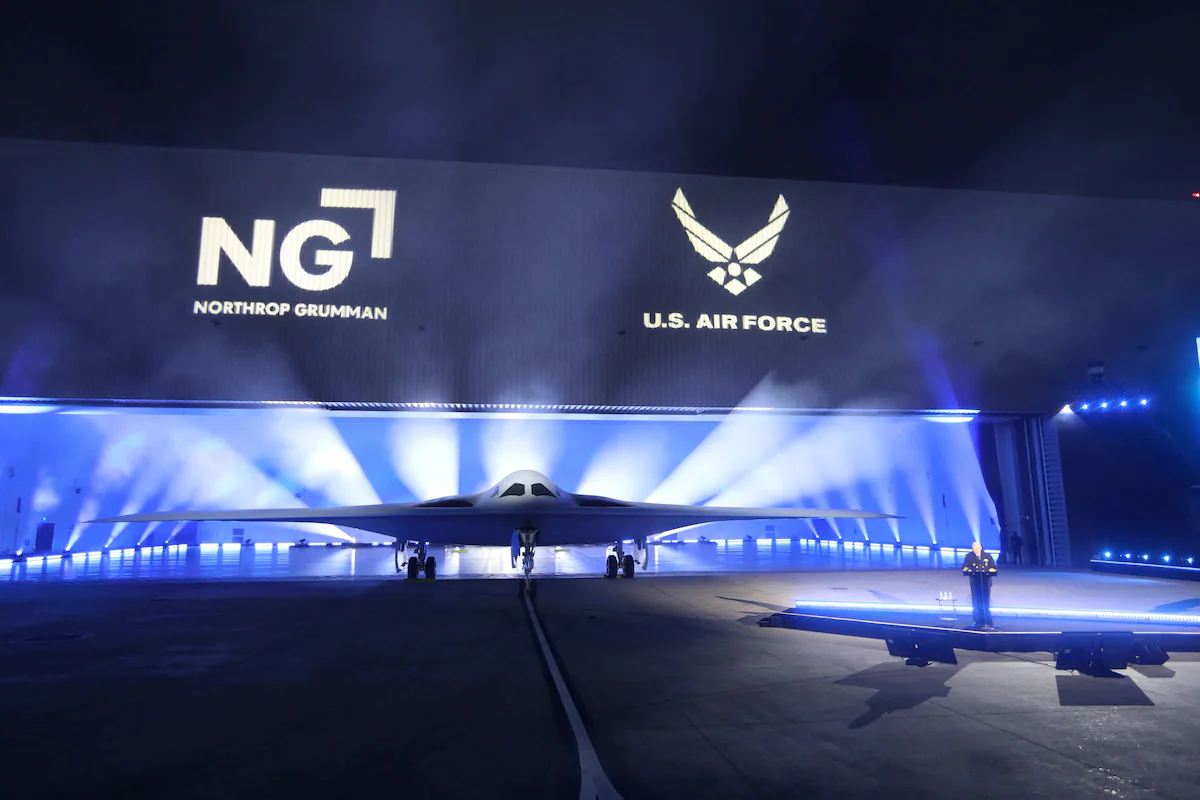PALMDALE, Calif. — The Pentagon and defense contractor Northrop Grumman unveiled the U.S. military’s bomber of the future on Friday, showcasing an aircraft cloaked in secrecy for years and set to serve as a backbone of Air Force combat operations for decades to come.
Pentagon reveals secretive B-21 bomber in California
The aircraft, named the Raider, is expected to be more advanced than any other now in the U.S. military’s arsenal
Defense Secretary Lloyd Austin, speaking in front of the hangar, said that the plane is proof of the Defense Department’s long-term commitment to building advanced capabilities that “will fortify America’s ability to deter aggression, today and into the future.” The stealthy plane, he said, has “50 years of advances in low-observable technology” built in, making it difficult for “even the most sophisticated air-defense systems” to detect a B-21 in the sky.
“The B-21 looks imposing,” Austin said. “But what’s under the frame and the space-age coatings is even more impressive.”
Austin added that U.S. defense is rooted in deterrence, and the development of the B-21 again serves as a symbol.
“We are again making it plain to any potential foe: The risks and costs of aggression far outweigh any conceivable gains,” Austin said.
 The
B-21 Raider, with a distinctive bat-wing shape, is awash in blue light
during a ceremony at Northrop Grumman. (David Swanson/Reuters)
The
B-21 Raider, with a distinctive bat-wing shape, is awash in blue light
during a ceremony at Northrop Grumman. (David Swanson/Reuters)The program is expected to cost at least $80 billion, with the Air Force seeking at least 100 planes. It marks the U.S. military’s first aircraft with so called sixth-generation technology, relying on advanced artificial intelligence, computer networking and data fusion to assist pilots as they carry out long-range bombing missions requiring them to slip in and out of enemy airspace. The Air Force also is exploring whether the B-21 could be flown remotely, though that would likely occur years after it first takes flight.
Much of the program remains classified, even as senior U.S. defense officials and company executives celebrated its progress. Media attending the event here in Palmdale were required to follow a slew of ground rules, including a ban on cellphones within the viewing area and, for visual journalists, restrictions on how the aircraft could be photographed.
There are six prototypes of the B-21, company officials said. A first test flight is expected next year.
For now, the Raider is in a “ground test” phase, with officials from the Air Force and Northrop Grumman conducting stress tests, evaluating the application of its radar-deflecting paint, and scrutinizing basic functions such as taxiing, Northrop Grumman officials said.
More than 8,000 people are working on aspects of the program, with aircraft parts coming from 40 states.
The Pentagon intends for the Raider to replace aging B-2 Spirit and B-1B Lancer bombers, phasing out the older aircraft by the 2040s. B-52 bombers, many decades old, also could be replaced by the B-21 in coming years. The unveiling event Friday included flyovers by all three aging bombers.
Until 2006, the Defense Department believed it could get by with its existing fleet of bombers until 2037. But the Pentagon began researching alternatives over the next decade, launching a contract competition for a new long-range bomber in 2014.
The U.S. military has for many years encountered costly problems and delays in developing other major weapons systems, including the advanced F-35 fighter likely to be teamed with the B-21 in future operations.
Air Force and company officials said in a panel discussion with reporters on Friday that the program continues to meet service requirements for cost, though the cost per copy has continued to rise. In 2010, the service said it hoped each plane would cost about $550 million. By 2019, the price had risen to $639 million, according to a Congressional Research Service report released last year, and the cost is expected to continue climbing.
Gen. Charles “CQ” Brown, chief of staff of the Air Force, told reporters in Palmdale that the development of the B-21 has been a product of collaboration between the service and Northrop Grumman. He noted that the plane’s Raider nickname is a nod to the Doolittle Raiders, U.S. service members who launched a long, daring bombing raid into Japan in April 1942, just months after the Japanese attack on Pearl Harbor in Hawaii drew the United States into World War II.
“That innovative spirit is sitting behind us right now,” Brown said, speaking in the hangar before the unveiling event as the B-21 sat under a cloak.
Kathy Warden, chief executive of Northrop Grumman, said Friday that the company iterated on thousands of versions of the plane before selecting a design. Some of its testing and development occurs digitally before the company builds hardware, limiting costs.
“In many ways,” Warden said, “we are taking technology from the future and bringing it to the here and now in this aircraft.”